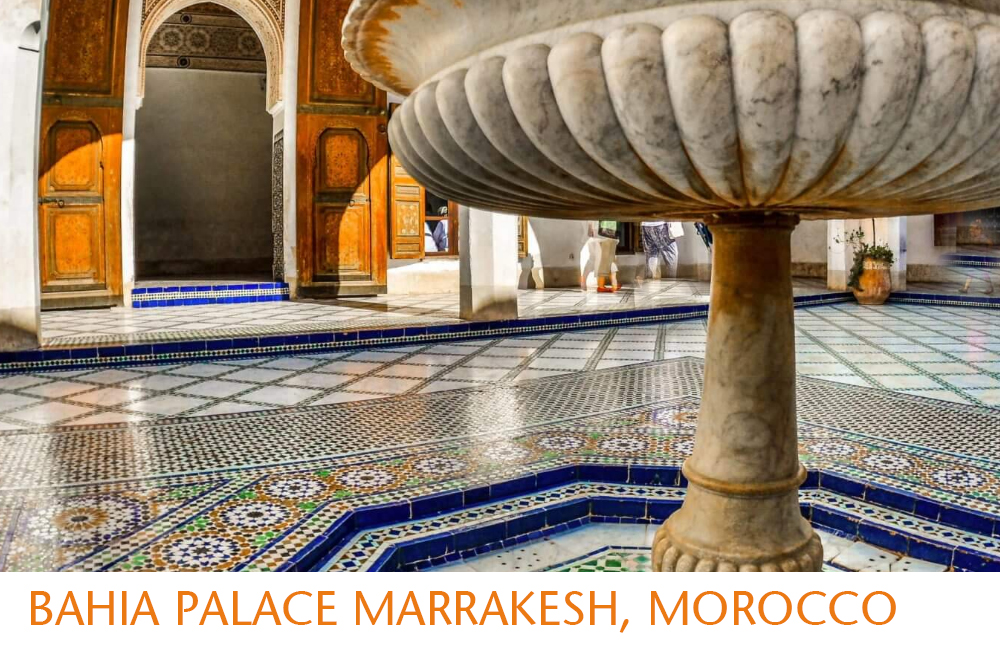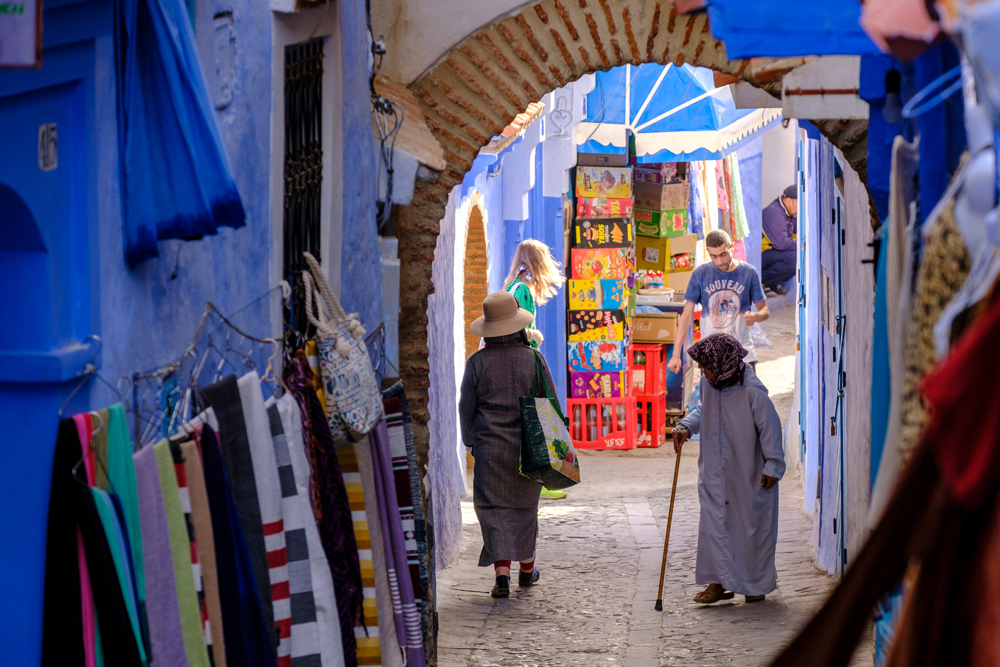MOROCCO Chaotic. Colorful. Eye-opening. Once part of the Carthaginian Empire, the first independent Moroccan state emerged around 225 BCE as the Berber kingdom of Mauretania. That kingdom eventually became a Roman province, though, by the 7th century CE, Muslim conquest of North Africa was in full swing. A French Protectorate from 1912-1956, Morocco gained its independence in 1956 and has been an independent state ever since.
Things to do:
Get lost in the medinas The medinas are the historic hearts of each city in Morocco, part residential area, part shopping center, part food market. Shops, restaurants, markets, and homes all line the twisting and turning streets in buildings seemingly too close together and too old to stay up much longer. Word of caution: The Fez Medina is a bit unsafe, so do not go too far off the beaten path. Stick to streets with lots of people or hire a guide to show you around.
What should you avoid:
MOROCCO is a Muslim country, hence the concept of clothing is rather traditional. Because Islam places a high value on modesty, you will not see locals wandering around in swimming suits or short skirts, no matter how hot it is. When it comes to visitors from Western countries, large cities like Casablanca and Tangier are relatively liberal, although most of the time you need to wear appropriate clothing.
Women should avoid exposing their legs or shoulders since it attracts unwanted attention from males and indicates that they do not respect local customs. So plan on wearing long pants, dresses, or jeans, as well as regular shirts that cover the shoulders.
Food Costs:
- Sit-down restaurants – 35-55 MAD
- Western restaurants – 100-400 MAD
- Casual take-out places – 30-50 MAD
- Beer – 70 MAD
- Glass of wine – 70 MAD
.
Bring a water bottle – The tap water here is generally safe to drink but you should bring a reusable water bottle witha filter just in case.
Eat from street stalls – It’s extremely easy to eat cheaply in Morocco. While restaurant meals typically cost as little as 30 MAD, street food is even cheaper. For just a few dollars, you can indulge in delicious kebabs, sausages, barbecued corn on the cob, roasted chicken, huge sandwiches, and more. Stick to eating at the local markets in the medina to spend very little money on food.
Negotiate your cab fare – Be sure to negotiate a price before you get into the taxi. There aren’t set prices and you need to bargain hard. Ask your hotel/hostel staff for price estimates so you don’t get ripped off.
Avoid faux guides – Faux guides (or false guides) linger in the medinas and offer you tour services. Be forceful in saying no while walking away. They are persistent but eventually give up if you keep walking.
Be careful of thieves – Petty theft, mostly involving wallets, watches, and cameras, is prevalent in the crowded medinas around the country. Stay alert and keep your valuables out of sight.
Avoid drinking – Even though drinking is frowned upon in the country, you can still find plenty of places that allow you to drink. They are overpriced (since alcohol is not common here) and the drinks aren’t that good. Avoid drinking during your visit, save money, and align yourself closer to local norms.
FEZ Founded in the 8th century, Fez was Morocco’s capital until 1912 and is still considered the country’s spiritual and cultural center. It’s a city is brimming with historic palaces, interesting museums, gorgeous mosques, stunning fountains, and plenty of narrow little alleyways you can explore.
The highlight, of course, is the city’s medina, the largest urban pedestrian zone in the world
MARRAKESH: is the fourth-largest city in Morocco and a modern mix of Moroccan and international culture, delicious food, and beautiful architecture in the medina, a UNESCO World Heritage Site.
Founded in 1070, the city has been the capital of various kingdoms and dynasties throughout the ages. But the history of the region stretches back even further, with indigenous Berbers inhabiting the area since the Neolithic era (10,000-4,500 BCE). The famous Jemaa el-Fnaa town square is the busiest square in Africa. This square is where you can find exotic street performers, snake charmers, tattoo artists, musicians, storytellers, and more. It’s huge, chaotic, crowded, and a sensory overload. At night, the market fills with food vendors and crowds of locals and tourists alike.
CHEFCHAOUEN is a small city located in the middle of the Rif Mountains. It is very relaxed, offers reasonable accommodations, and is visually stunning as the streets and buildings are all painted a vibrant sky blue (you’ve probably seen it on Instagram). It’s a great place to wander, shop, and sip mint tea. TANGIER If you’re unsure about visiting Africa and want to have a taste of the country, then Tangier is the perfect introduction and one of the best places to head. It has a classic old medina which is a Moroccan old town. They have a souk which is their shopping area. They even have a Hop-on, Hop-off bus service!!! Morocco is famous for the souks that you’ll find in most towns and cities; a souk is the term for a marketplace in northern Africa. The narrow streets of Tangier are full of small shops selling anything from clothes to jewellery to spices.


